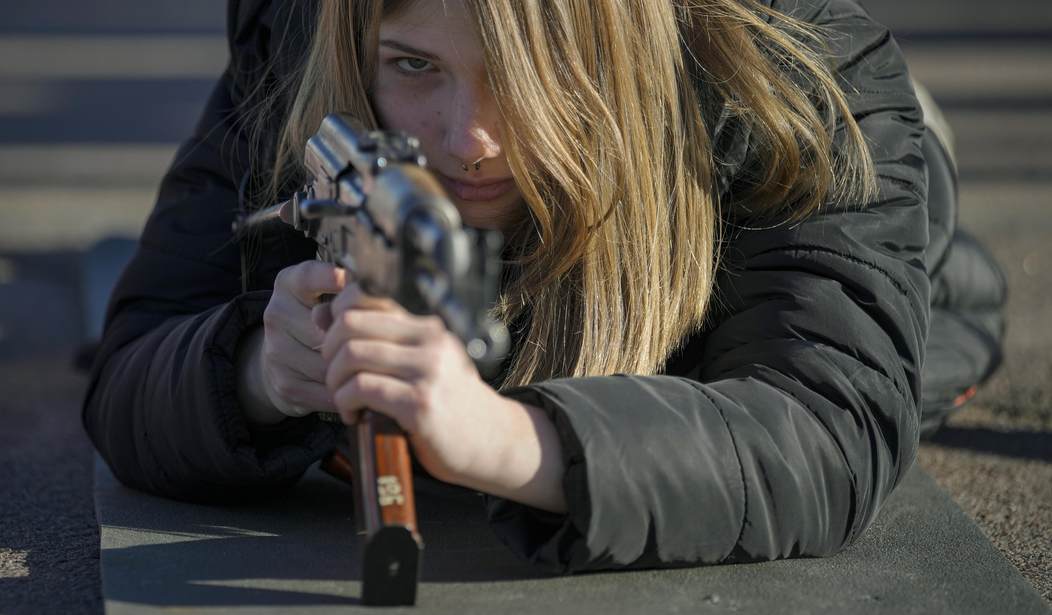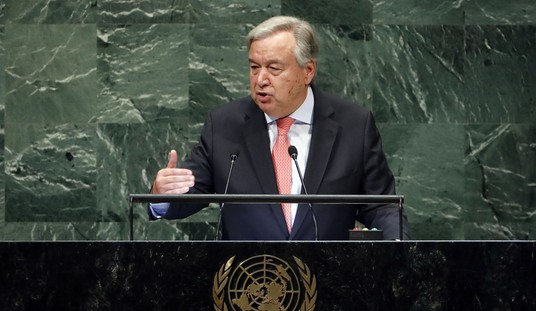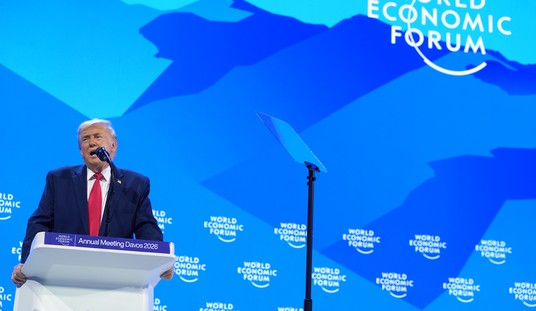Job one for Russia is seizing as much territory as it can as quickly as it can before its army breaks. If you believe the Ukrainian figures, some 30,000 Russians are already KIA with many more wounded out of an original invasion force of 200,000 or so. That force was woefully undermanned relative to the military conventional wisdom that an invader needs a three-to-one advantage in numbers to sustain a prolonged occupation.
But the Russian army has been grinding ahead lately. Putin’s defense minister, Sergei Shoigu, claimed that they now control 97 percent of Luhansk province, one of the two regions that comprise the Donbas. The Ukrainians managed to regain a bit of momentum there this weekend by launching a surprise counterattack in Sievierodonetsk, which had seemed destined to fall to the Russians at any moment. But in the past 24 hours Ukraine’s position in the city has “worsened,” with the Russians launching “intense artillery barrages, airstrikes and non-stop street-by-street fighting” in an all-out bid to take it. Sievierodonetsk is already mostly rubble after weeks of fighting and its sister city across the river, Lysychansk, is reportedly being reduced to the same fate. Zelensky called both “dead cities” yesterday.
So far, so good, from Russia’s perspective. They want to gain full control of the Donbas and they’re doing it, inch by inch, at high cost.
But after that comes the hard part. Having conquered Ukrainian territory, they need to figure out a way to hold it. “The Russian military is well-suited to short, high-intensity campaigns defined by a heavy use of artillery,” Michael Kofman and Rob Lee wrote recently. “By contrast, it is poorly designed for a sustained occupation, or a grinding war of attrition, that would require a large share of Russia’s ground forces, which is exactly the conflict it has found itself in. The Russian military doesn’t have the numbers available to easily adjust or to rotate forces if a substantial amount of combat power gets tied down in a war.” The evidence of a severe Russian manpower problem is mounting, bearing that thesis out.
Which raises a question: How do the Russians plan to control the 20 percent of Ukraine they presently occupy, especially if the reports are true of a Ukrainian Resistance arising in occupied territory?
The Kremlin-backed mayor of the Ukrainian town of Enerhodar was standing on his mother’s porch when a powerful blast struck, leaving him critically wounded. A week later, about 75 miles away, a car packed with explosives rocked the office of another Russian-appointed official in the occupied southern city of Melitopol…
[T]he explosion that injured the Enerhodar mayor, Andrei Shevchik, is one of more than a dozen high-profile attacks in recent weeks that analysts say indicate increased partisan activity aimed at Russian occupation forces in the Kherson and Zaporizka regions of southern Ukraine…
In the past month, Ukrainian partisans claim, insurgents have attacked Russian trains and killed dozens of Russian soldiers, as well as supporting the Ukrainian military’s counterattacks. Their claims are impossible to independently verify. The partisans also have established a virtual Center of National Resistance, which features instructions for things like setting up ambushes and what to do if arrested.
A cycle familiar from World War II may have begun to develop in which patriots attack the occupiers, the occupiers crack down harshly on locals to try to deter further attacks, and the crackdown breeds further resentment among locals who might otherwise tolerate the occupation. One Ukraine expert has documented numerous examples of suspected insurgent attacks in Russian-held territory over the last few months and believes the budding Resistance movement could be significant this fall. “The real impact of the partisan movement will be felt if it spreads to most of southern Ukraine, intensifies its efforts, and—most important—coordinates its activities with the counter-offensive the Ukrainian armed forces, bolstered by deliveries of western heavy weaponry, are expected to launch in late July or August,” writes Alexander Motyl.
Somehow the Russian military will need to solve that problem while continuing to lose men on the battlefield, likely at a higher clip once U.S. and UK long-range weapons are in the field.
There’s another problem. Because of the manpower shortage, some Russian troops have been fighting nonstop for three months. Units that were initially based around Kiev may have been immediately redeployed to the Donbas and thrown into a brutal war there. Some have begun to complain publicly that they can’t keep this up:
In two videos, fighters from Russian-controlled east Ukraine complained about poor conditions and long terms of duty at the front leading to exhaustion. “Our personnel have faced hunger and cold,” said fighters from the Russian-controlled 113th regiment from Donetsk in one video posted online. “For a significant period, we were without any material, medical or food support.”
The fighters added: “Given our continuous presence and the fact that amongst our personnel there are people with chronic medical issues, people with mental issues, many questions arise that are ignored by the higher-ups at headquarters.”…
“I have been fighting in Ukraine since the start of the war, it has been over three months now,” Andrei, who serves with the 37th Separate Guards Motor Rifle Brigade headquartered in Buryatia in Siberia, told the Guardian. “It is exhausting, my whole unit wants a break, but our leadership said they can’t replace us right now.”
It’s worse for pro-Russian separatists in the Donbas, who are reportedly being recruited and sent directly into battle with little training and in some cases without protective equipment. “Over 70% of those here were previously decommissioned because they physically can’t fight. Over 90% have never fought before and saw a Kalashnikov for the first time. We were thrown on to the frontlines,” said one separatist soldier to the Guardian. It’s no mystery why that’s happening: Russia needs to protect its regular troops as much as possible for the coming occupation and any future offensives so it’s treating the locals as cannon fodder in the mission to conquer Luhansk.
Somehow, when the smoke clears, they’re going to have to stand up a force capable of securing Russian gains over hundreds of miles — from Kherson in the south all the way up to Sievierodonetsk and Luhansk in the northeast. Where are they getting the troops to do that? Will they have Russian grandpas walking the beat as military police in cities like Mariupol?
Via Mediaite, here’s a feelgood video with which to wind down the day. The latest strategy from the “palace full of sh*t” is to steal hundreds of thousands of tons of Ukrainian grain and ship it back to Russia. If Russian troops can steal appliances from Ukrainian families, why wouldn’t the Russian government steal food out of their mouths too?
Over the weekend, Italian TV host Massimo Giletti went to Russia where he interviewed Foreign Ministry spokeswoman Maria Zakharova and top state TV host Vladimir Solovyov
Fellow Italian journalist Alessandro Sallusti wasn't impressed…
(thanks to @LBuscicchi for translating) pic.twitter.com/J02tK8pkYZ
— Francis Scarr (@francis_scarr) June 6, 2022







Join the conversation as a VIP Member